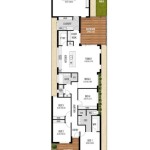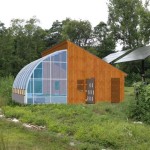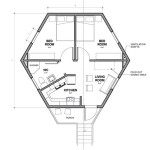Japanese Style House Floor Plans: Harmony and Functionality in Design
Japanese style house floor plans are renowned for their emphasis on natural light, open space, and a seamless connection with the surrounding environment. These designs prioritize functionality and simplicity, creating a living space that promotes tranquility and well-being. The underlying principles of Japanese architecture, rooted in centuries of tradition, continue to influence modern design while remaining relevant to contemporary lifestyles.
Understanding the core elements of Japanese style floor plans is crucial for those seeking to incorporate this aesthetic into their homes. The careful consideration of space, materials, and the relationship between interior and exterior spaces are all hallmarks of this design philosophy. This article will explore key aspects of Japanese floor plans, providing insights into their structure and the principles that guide their creation.
Key Point 1: The Concept of "Ma" and Spatial Arrangement
A central concept in Japanese design is "Ma," which translates roughly to "negative space" or "gap." It is not simply an empty area, but rather a dynamic void that influences the perception and use of the surrounding space. In a Japanese floor plan, "Ma" is carefully considered to create a sense of openness and flow. This concept is realized through the strategic placement of furniture and the utilization of sliding doors (shoji or fusuma) which allow spaces to be opened or closed as needed, adapting to various activities and social interactions.
The arrangement of rooms in a Japanese house often promotes a sense of progression. The entrance, known as the "genkan," serves as a transition zone between the outside world and the interior. Here, shoes are removed before stepping onto the raised floor. This practice emphasizes cleanliness and separates the outside world from the sanctuary of the home. The "genkan" typically leads to a corridor or hallway, which connects the various rooms of the house. These corridors are usually kept uncluttered to maintain a sense of serenity and facilitate smooth movement throughout the dwelling.
Living spaces, such as the living room (ima) and dining room (daidokoro), are often designed with flexibility in mind. The use of tatami mats as flooring provides a uniform surface that can be used for sitting, sleeping, or dining. Low tables and floor cushions replace traditional chairs, encouraging a closer connection to the ground. The absence of bulky furniture allows for a more adaptable and fluid use of the space. Furthermore, the orientation of these spaces is often planned to maximize natural light and views of the surrounding garden or landscape.
Private spaces, such as bedrooms, are typically smaller and more enclosed than the living areas. These rooms provide a sense of intimacy and privacy, allowing for quiet contemplation and rest. Japanese beds, known as futons, are often stored away during the day to free up space for other activities. This practice further enhances the versatility of the room, allowing it to be used for diverse purposes.
The kitchen in a traditional Japanese house is often separated from the living areas to contain noise and odors. However, modern Japanese floor plans often incorporate open-plan kitchens to promote social interaction and a sense of spaciousness. Even in open-plan designs, careful attention is paid to ventilation and organization to maintain a clean and uncluttered appearance. The use of natural materials, such as wood and bamboo, further enhances the connection to nature and creates a calming atmosphere.
Key Point 2: Natural Materials and Connection to Nature
Japanese architecture emphasizes the use of natural materials such as wood, bamboo, paper (in shoji screens), and stone. These materials bring a sense of warmth and authenticity to the living space, connecting the inhabitants to the natural world. The selection of materials is often driven by considerations of sustainability and durability, reflecting a respect for the environment.
Wood is a primary building material in Japanese houses. Different types of wood are used for various purposes, depending on their strength, durability, and aesthetic qualities. Cedar and cypress are frequently used for structural elements, while lighter woods such as paulownia are used for furniture and interior finishes. The natural grain and texture of the wood are often highlighted, adding visual interest and character to the space. The use of untreated wood allows the material to breathe and age gracefully, developing a unique patina over time.
Bamboo is another versatile material used in Japanese architecture. It is often used for screens, fences, and flooring, adding a touch of elegance and sophistication to the design. Bamboo is a fast-growing and sustainable resource, making it an environmentally friendly choice. Its natural resilience and durability make it ideal for both indoor and outdoor applications.
Shoji screens, made of translucent paper stretched over a wooden frame, are a defining feature of Japanese interiors. They allow natural light to filter into the room, creating a soft and diffused illumination. Shoji screens can be easily moved or removed, allowing for flexible spatial arrangements and a seamless connection between interior and exterior spaces. The delicate texture and subtle patterns of the paper add a touch of artistry and refinement to the design.
Stone is often used in gardens and entryways, creating a sense of permanence and stability. Stepping stones and gravel paths are carefully placed to guide the eye and create a sense of rhythm and balance. The use of natural stone adds a tactile element to the design, grounding the building in its surroundings. The careful selection and placement of stones reflect a deep appreciation for the beauty and power of nature.
The integration of nature into the living space is a key principle of Japanese design. Large windows and sliding doors are used to frame views of the surrounding landscape, bringing the outside in. Gardens are often designed as extensions of the interior, creating a seamless transition between the two. The use of potted plants and bonsai trees further enhances the connection to nature, bringing a sense of tranquility and vitality to the home.
Key Point 3: Minimalism and Functionality
Japanese style house floor plans are characterized by their minimalist aesthetic and emphasis on functionality. Clutter is minimized, and objects are carefully chosen for their beauty and utility. This approach creates a serene and uncluttered living space that promotes mental clarity and well-being.
The principle of "Danshari," which encompasses decluttering, minimalism, and mindfulness, underlies the Japanese approach to interior design. This philosophy encourages the removal of unnecessary possessions and the appreciation of the essential. By reducing clutter, the focus shifts to the quality and craftsmanship of the remaining objects. Each item is carefully chosen for its purpose and its aesthetic value, reflecting a mindful approach to consumption.
Storage is carefully considered in Japanese floor plans to maintain a clean and uncluttered appearance. Built-in cabinets and hidden compartments are used to conceal everyday items, keeping the living space free from visual distractions. Minimalist furniture designs often incorporate storage solutions, maximizing the functionality of each piece. The goal is to create a sense of spaciousness and order, allowing the mind to relax and focus.
Multifunctional spaces are another key element of Japanese design. Rooms are designed to be adaptable and versatile, serving multiple purposes depending on the needs of the occupants. Sliding doors and movable screens allow for the creation of flexible boundaries, transforming a single room into multiple spaces as needed. This approach maximizes the efficiency of the floor plan and reduces the need for excessive square footage.
The use of modular furniture is another way to enhance the functionality of a Japanese home. Modular pieces can be easily rearranged and reconfigured to adapt to different activities and social situations. This flexibility allows for a dynamic and ever-evolving living space that reflects the changing needs of the inhabitants.
Lighting plays a crucial role in creating a minimalist and functional atmosphere. Natural light is maximized through the use of large windows and skylights. Indirect lighting and paper lanterns are used to create a soft and diffused illumination, promoting a sense of calm and relaxation. Task lighting is carefully positioned to provide adequate illumination for specific activities, such as reading or cooking.
In conclusion, Japanese style house floor plans offer a unique and compelling approach to residential design. By prioritizing space, natural materials, and functionality, these designs create a living environment that nurtures tranquility, well-being, and a deep connection to nature. The principles of Japanese architecture continue to inspire and inform modern design, offering valuable lessons in simplicity, sustainability, and the art of creating a harmonious living space.

Typical Home Layouts Differences Between Japan And Abroad

Traditional Japanese House Style Plans

Hachidori Floor Plan Traditional Japanese House Japan Design Home Plans

Japanese Home Design Ideas Pictures 331 Sqm Homestyler

Japanese Home Design Ideas Pictures 331 Sqm Homestyler

Traditional Japanese Home Floor Plan Cool House Plans Ideas Des Architecture Style

The Floor Plan Of Apartments In Japan Japanese Home Archi Designer

Prefab Japanese Pavilion Traditional Architecture

The Layout Of Ground And First Floor A Traditional Japanese House Scientific Diagram

Palo Alto Traditional V Japanese Style Studio S Squared Architecture








